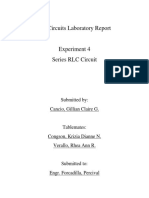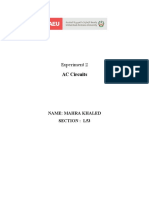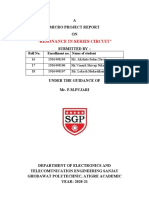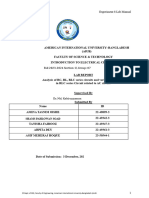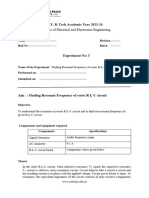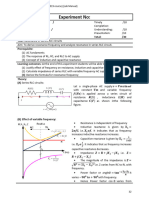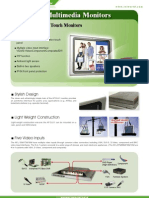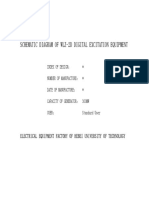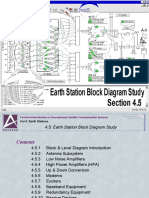0% found this document useful (0 votes)
60 views5 pagesClass Session File
The document describes an experiment on resonance in a series RLC circuit. The objectives are to study resonance frequency, phase angle between current and voltage at different frequencies, and voltages across inductors and capacitors. The procedure is to connect an RLC circuit and vary the capacitance and frequency to find the resonant point. Results are recorded in a table with voltages and current at different frequencies. Graphs of inductor and capacitor voltages versus frequency are plotted, along with reactances and current versus frequency to analyze resonance.
Uploaded by
Lara MaxCopyright
© © All Rights Reserved
We take content rights seriously. If you suspect this is your content, claim it here.
Available Formats
Download as PDF, TXT or read online on Scribd
0% found this document useful (0 votes)
60 views5 pagesClass Session File
The document describes an experiment on resonance in a series RLC circuit. The objectives are to study resonance frequency, phase angle between current and voltage at different frequencies, and voltages across inductors and capacitors. The procedure is to connect an RLC circuit and vary the capacitance and frequency to find the resonant point. Results are recorded in a table with voltages and current at different frequencies. Graphs of inductor and capacitor voltages versus frequency are plotted, along with reactances and current versus frequency to analyze resonance.
Uploaded by
Lara MaxCopyright
© © All Rights Reserved
We take content rights seriously. If you suspect this is your content, claim it here.
Available Formats
Download as PDF, TXT or read online on Scribd
/ 5


